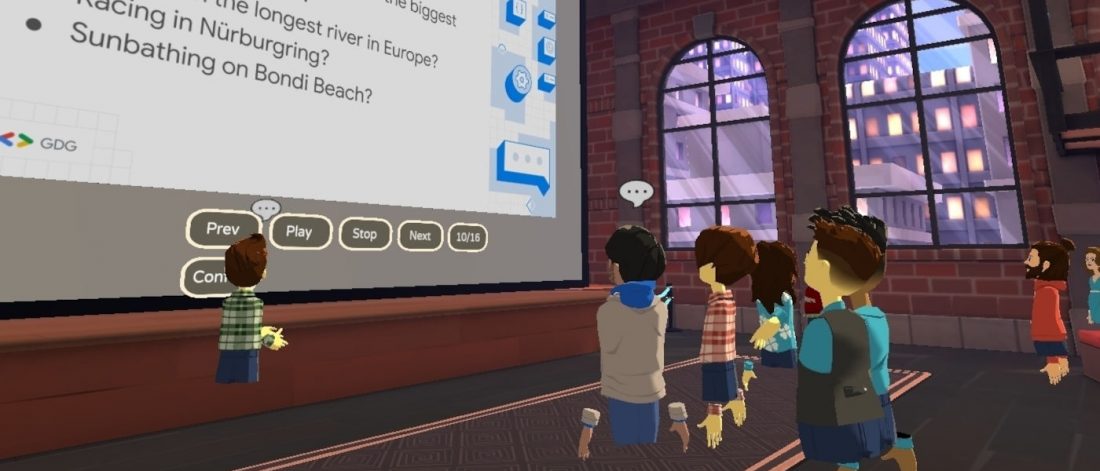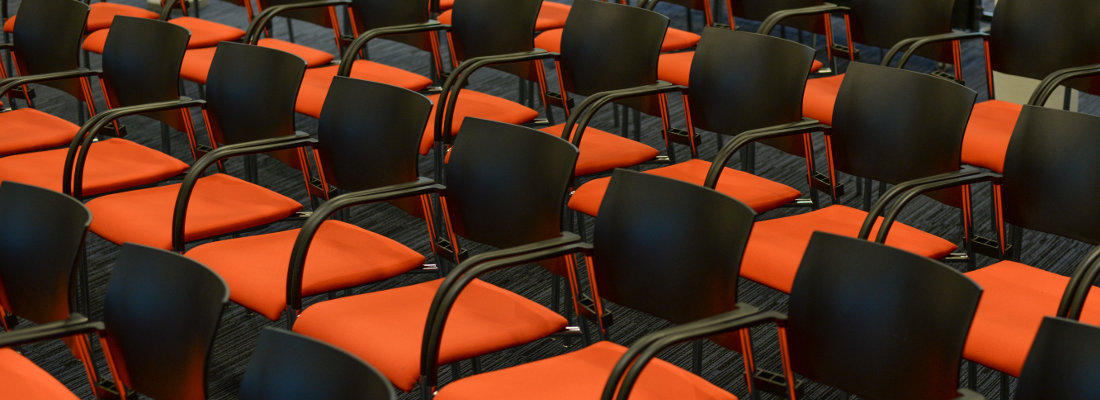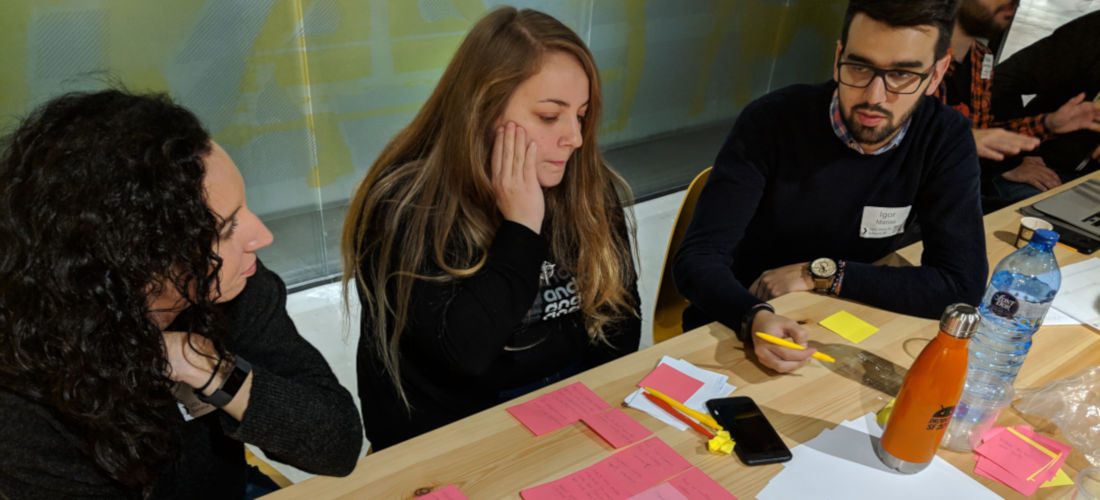Pandemic forced all of us, community managers used to organize in-person events, to interact exclusively using the online medium. I have no doubt that, post pandemic, we’ll be back to in-person activities: as human beings, we are genetically wired to this form of interaction. But I also think there is a third option, able to break this online vs offline dichotomy: Virtual Reality. To me, as community managers, we should seriously start considering to run some of our events in virtual reality, adding over time this new option to our precious “community toolbox”. Allow me to list the core reasons.
Online brought several positive elements, with two that really stood out: no more physical barriers to attend an event (not able to travel to the place, no time for commute, I have to choose between family / event, etc), and a considerably less effort for the event organizers, both in financial terms, that the time required. The same applies to VR events, and it’s already a huge plus.
On the other side, online events severely lack in two areas, compared to in-person counterparts: attendees’ attention span and connection opportunities. Both are not impossible, but difficult to obtain.
On the contrary, because VR is immersive, attendees focus on what’s happening to them “here and now”, without being too much distracted by the rest of the world (or, simpler, by the rest of open tabs in their browsers).
And because of the “spatial” element of VR events, where attendees can move around in the virtual space, during moments of unstructured networking people tend to naturally gather in small groups and talk to each other. Similarly, they can listen to a discussion happening close to them, and then decide to join it or move to another group. Or spontaneously start interacting with an avatar close to them. I’ve seen this happening to every single meetup I attended in virtual reality. For what it’s worth, Remo.co brings a very similar “spatial” paradigm to online conferences, and it works pretty well, for my personal experience.
Virtual reality experiences offer also several options to reinforce two key elements of every community: a sense of togetherness, and the perception of a common identity.
Going around in a virtual event, it’s possible to perceive the mood and the vibe, if attendees are awake and proactive, or just passive listener. It’s hard to explain, but it happens, like it happens for real events. And when the mood is positive and energized, attendees feel part of something bigger, are happy to be there, and not somewhere else, and there is a positive peer pressure to contribute. It’s empowering!
For the identity piece, the space in virtual reality can be customized to breath the community identity. From putting around picture of past experiences that bring good shared memories to attendee’s minds, to symbols disseminated everywhere, that are unique to the community. It’s even possible to re-create real locations where the community was used to gather. Avatars too can contribute to the community identity, for example by wearing a common dress.
All of that mainly because the intrinsic immersive aspect of a VR event, and the maturity of the VR platform used, in terms of environmental details and space customization options offered.
Another additional considerations it about the Gen Z and Gen Alpha habits: they’re already used to interact with friends and other people in a 3D space using a 2D client (e.g.: Fortnite, Minecraft and other platforms). So, for them, the transition to an immersive 3D world is pretty straightforward, I would even say expected.
Virtual reality is a new frontier
Of course, virtual reality is a new frontier, it may be scary for someone (like videoconferences scared some people before we were forced to get used to them), it has a learning curve, and it’s difficult to get it right on the first attempt. It’s normal and expected. But personal connections make all the difference between a group of people, and a community. And only in VR I felt personally connected to other attendees, similar to how I feel during in-person events. Something that didn’t happened at the same level during the many other online events I’ve participated in these last 10 months, no matter their quality. Simply put, I believe the online medium doesn’t allow, while the VR medium can, if well orchestrated.
So, you should try, as soon as possible, to organize an event for your community in Virtual Reality. Test and iterate. The majority of the platforms are free to use, or free up to a certain number of attendees (around 50), and some of them offer 2D clients for people without a VR headset. Curios to know where to start? Here I put some key principles to organize community events in virtual reality.



